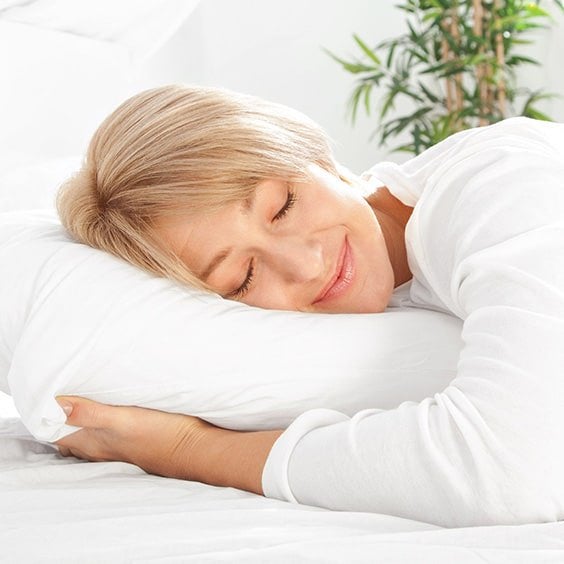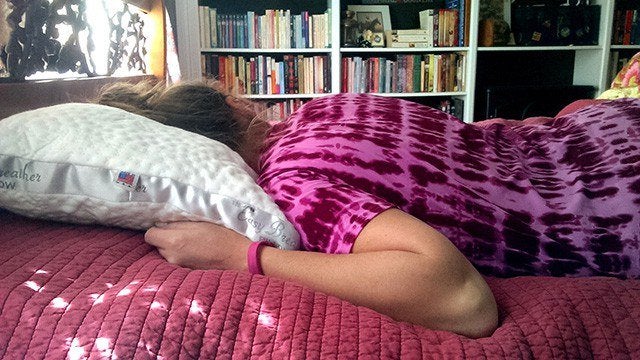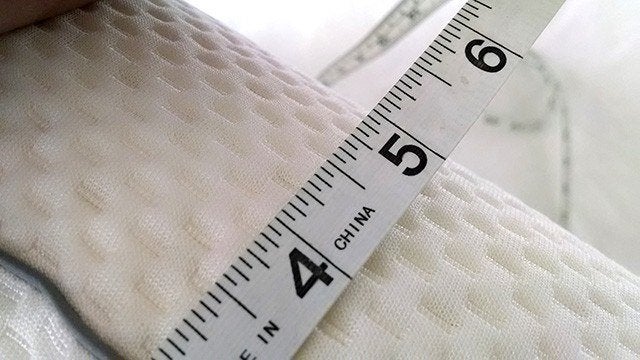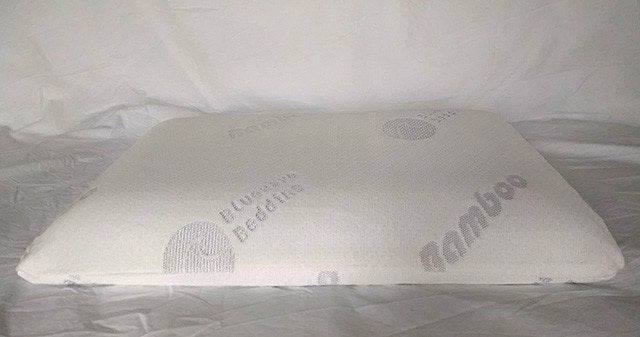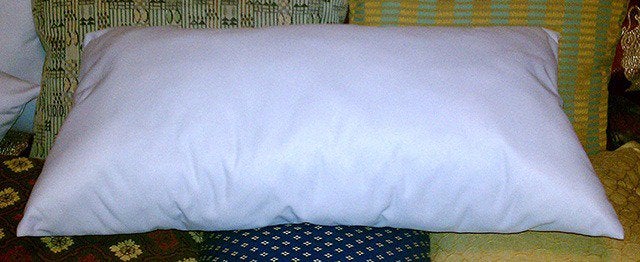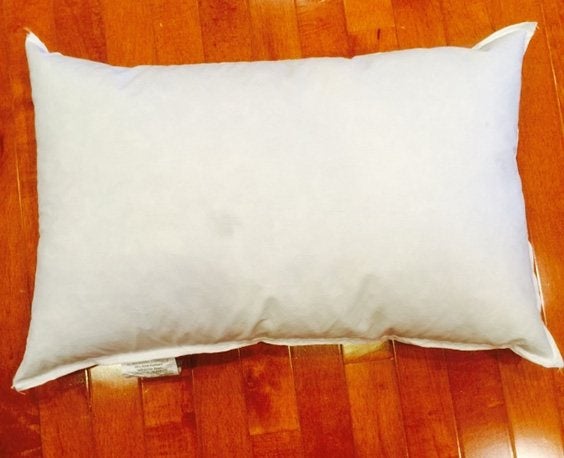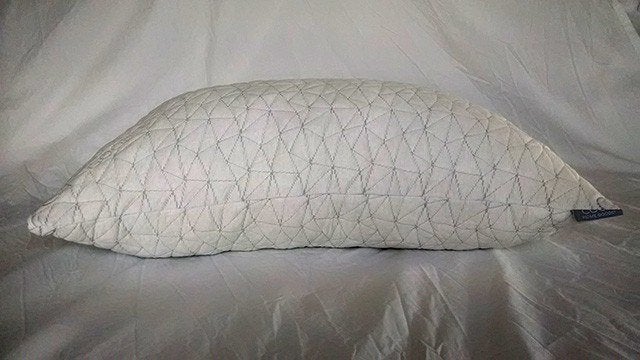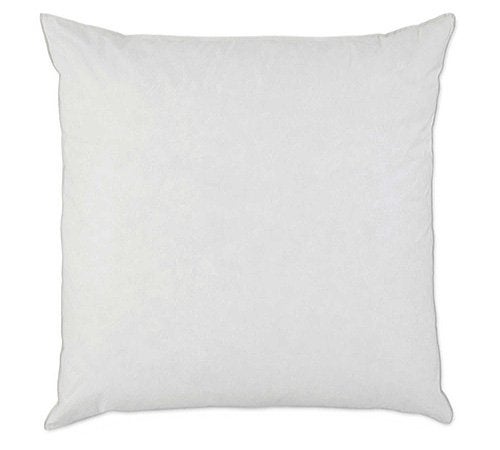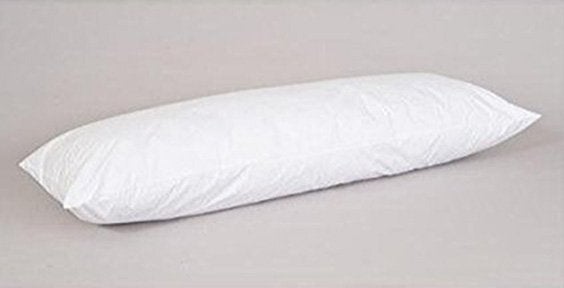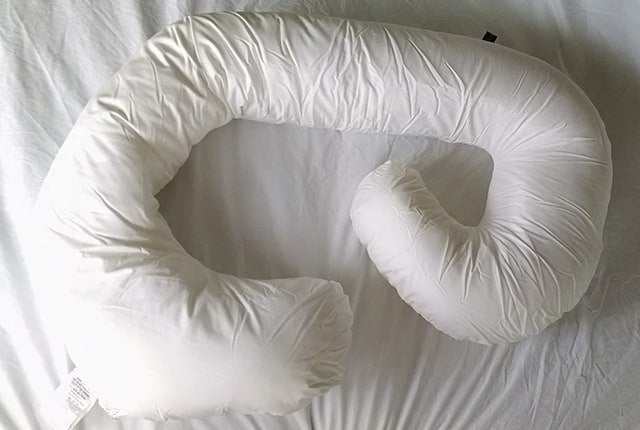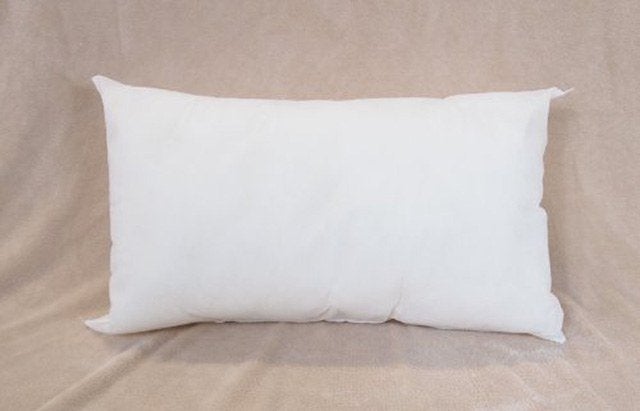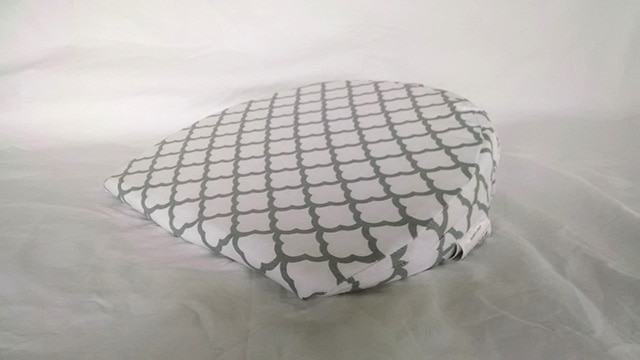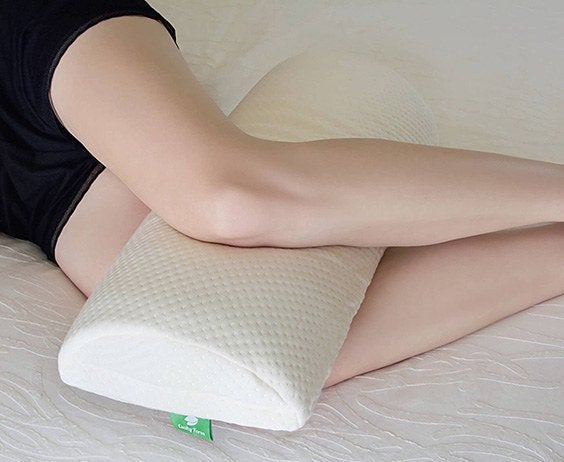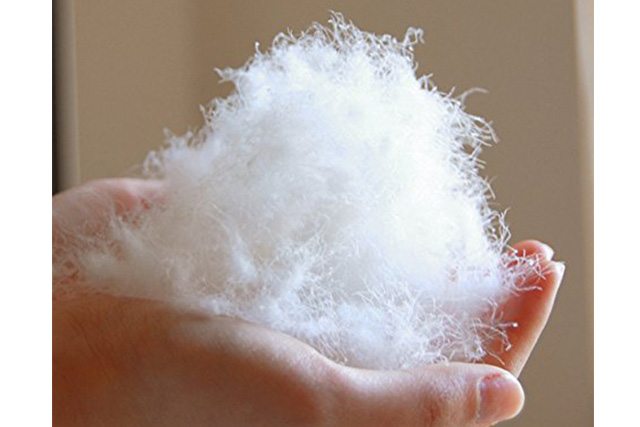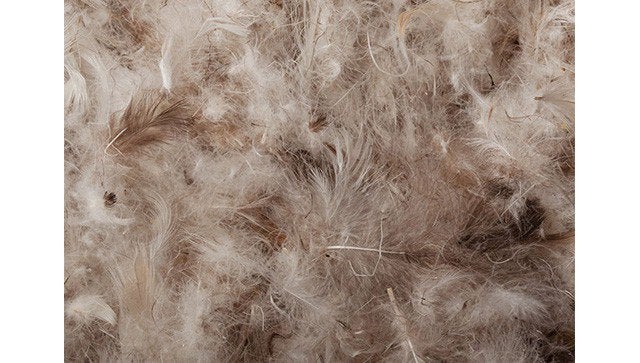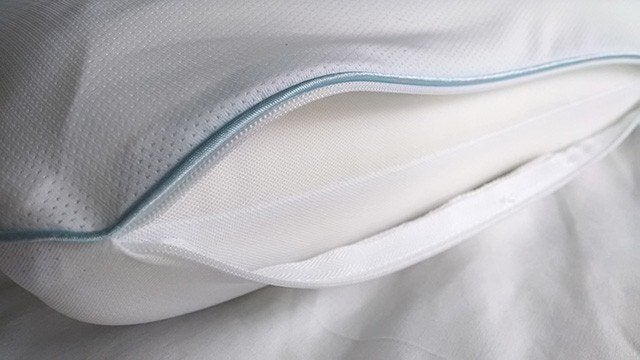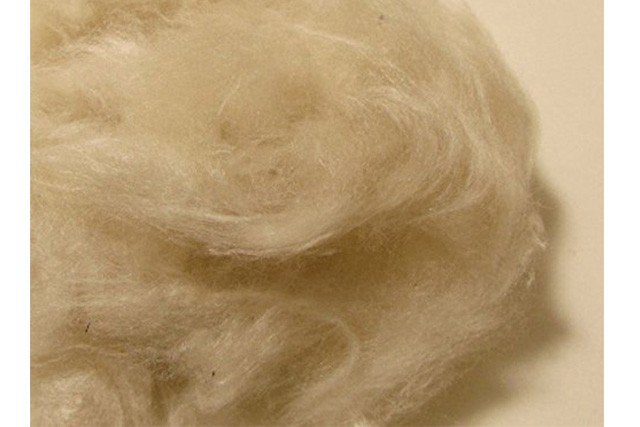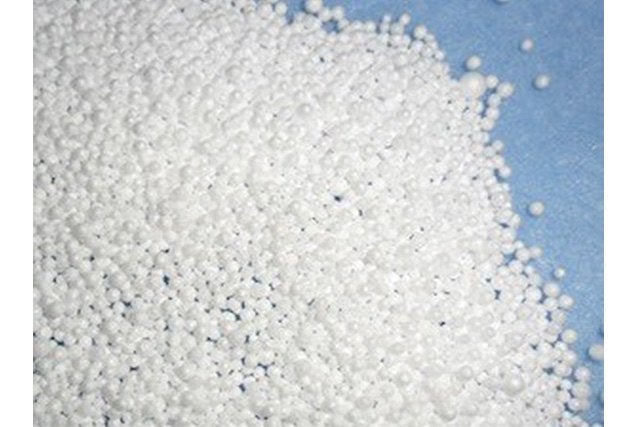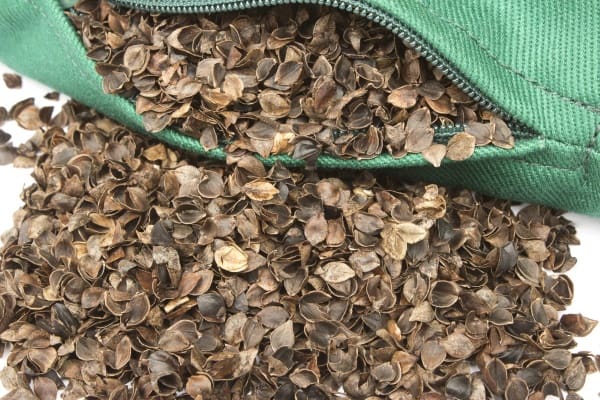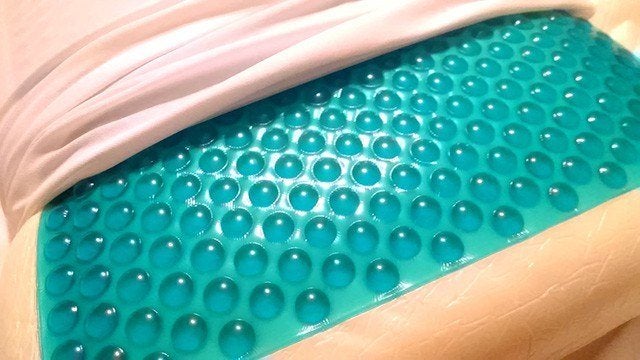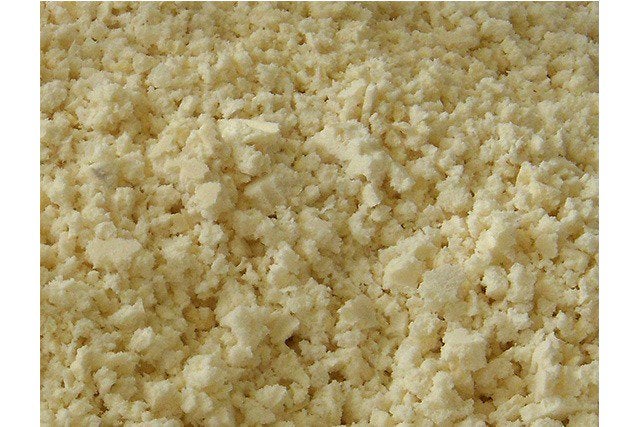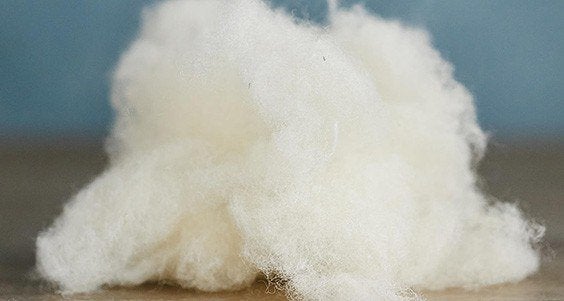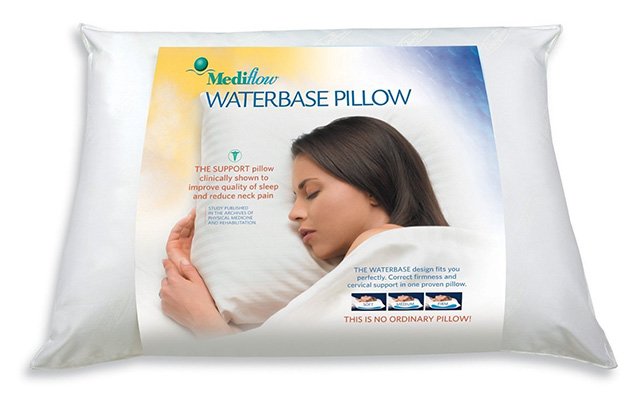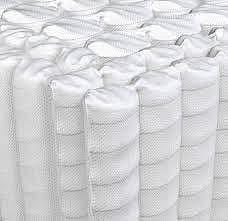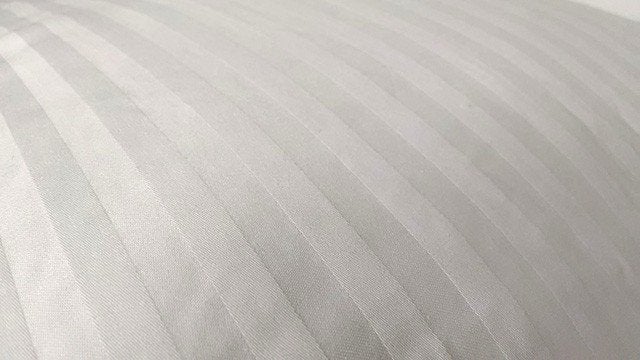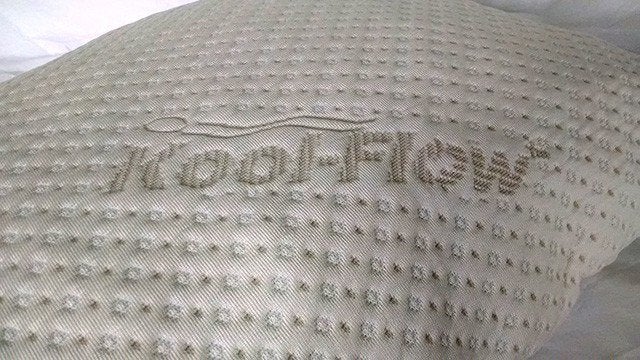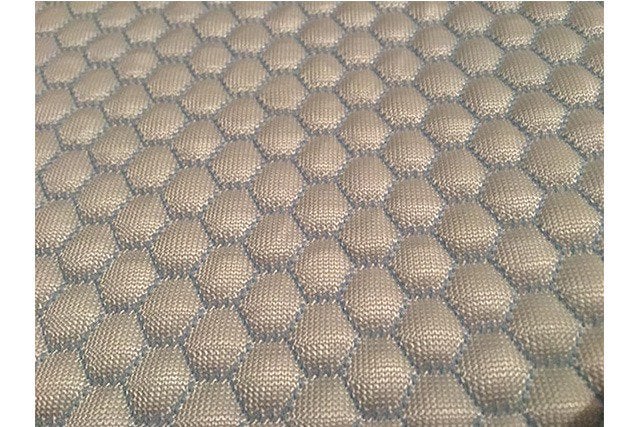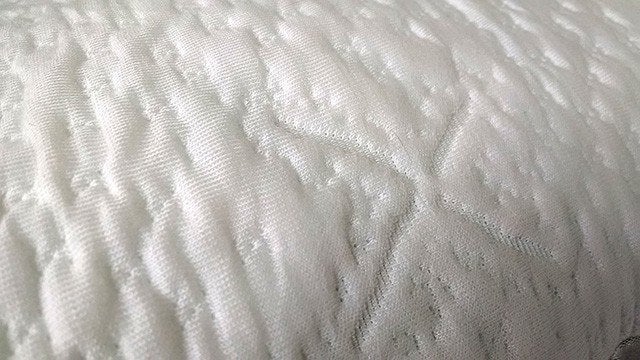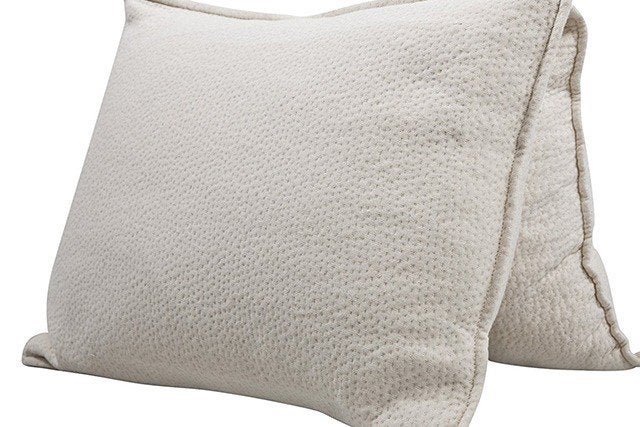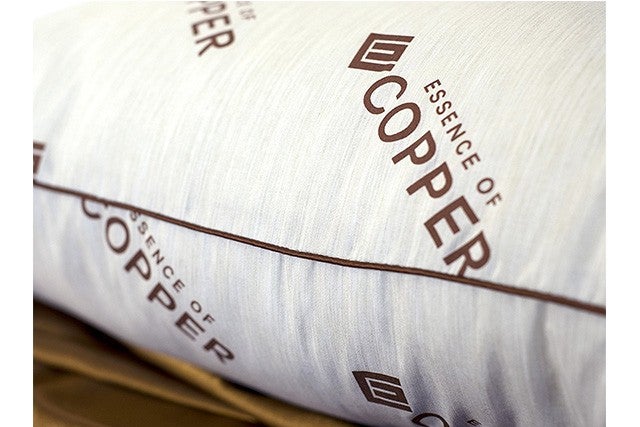The types of pillows you choose to rest your head upon each night is almost as important as your mattress. Your body alignment can be severely compromised by a poor pillow choice, and unfortunately, many people are unaware of just how influential a pillow can be to their overall sleep quality. If you limit yourself to just those pillows found on a retailer’s shelf, then you may not be aware of just how many pillow choices exist for your overall comfort.
You may be interested in: How Many Pillows Should You Sleep With?
Sleep Position and Comfort Needs
You choose your mattress based on your natural sleep position to provide proper spinal alignment and support throughout the night. Your pillow choices should be chosen for the same reason since compromising your cervical support can wreak havoc on your overall health over time. Choosing your pillow based on looks or initial preferences is a common mistake, and although, your personal choices should play a part in your final decision- first and foremost a pillow should be selected with your sleep posture in mind.
Back Sleep Position Needs
Sleeping on your back is considered the most healthy way to sleep unless you suffer from sleep apnea. It supports your spine and associated soft tissues more so than any other position, and also it is considered a way to help keep your skin looking more youthful due to how gravity works upon your body through the night.
A back sleeper needs a thinner pillow that helps hold their head in alignment between, and level, their shoulders. If your head falls too far back, it places a strain upon your neck and upper back, and if it is lifted too high, it will compress your vertebrae and affect your lower back as well.
Stomach Sleep Position Needs
Sleeping on your stomach is the worst sleep position you can choose, but since most people fall naturally into the position they feel most comfortable in, there is not much to do but support it the best way possible. Since your neck and spine will always be somewhat compromised when sleeping on your stomach, you need to focus on keeping it as level as possible with your spine which means it should lay flush, or near flush, with the mattress surface depending on your body type.
Thinner pillows are your best bet if you are a stomach sleeper- with variances in soft and firm surfaces left to your own personal preferences. The important detail to note is to choose a pillow that does not lift your head above your shoulders too far to keep from stressing the rest of your back.
Side Sleep Position Needs
Since this is the most common sleep position, most retail stores carry pillows specific to a side sleeper’s needs. Side sleeping places strain upon your entire spinal column, but luckily, your body is very adept at adjusting to help keep it in alignment. The most mattress also provides contouring and give to allow for your body to naturally rest and help keep your spine straight.
When choosing a pillow, you need to look for a thicker supportive choice that helps hold your head even between your shoulders and also fills in the gap created between your head and shoulders to allow your neck to rest.
You may be interested in: Best Orthopedic Pillows for Side Sleepers
Pillow Loft
You probably hear pillow loft, or height, used often to help explain pillow comfort. It is assumed that a loftier pillow is a firmer pillow, but this is not always true. Loft simply refers to the height a pillow can be measured at when resting on a flat surface. Soft airy fills (explained below) can easily influence a high loft which may compress drastically upon the application of weight.
If you want your pillow to be able to rest in its natural loft, then you will want to make sure you provide a proper pillowcase for its side so it can expand. Just don’t mistake this measurement for overall comfort- rather be sure to consider fill material choices and the amount of fill used.
Below, we’ve outlined the many variances available in order to better meet your specific needs each night. Pillow types, fillings, sizes, and uses are all explained here:
Pillow Shapes and Sizes Explained
Of course, any company can create any size pillow they feel best represents the support and comfort their pillow provides- but there are some industry standards to consider that help you match your new pillow with your pillow encasements and casings. Not all pillows fit into a one size fits all category, and knowing the differences in advance can help you with the proper fit to both your bed size and your own body shape.
#1. Standard
Standard pillow sizes are by far the most commonly found and popular since they fit all bed sizes well up to a queen, and also they provide proper comfort for the average sized person. Measuring 20 x 26 inches, these fit well in both standard sized and queen sized pillowcases.
#2. Super Standard
A super standard is slightly longer than a standard and measures 20 x 28 inches. These are good choices for people who roll through the night and need a bit more material between their heads and the mattress. They also fit well across single and twin sized beds for children and fit into both standard and queen size pillowcases with ease.
#3. Queen
Queen size pillows are the next popular size and, many times, are often synonymous with a standard pillow size. These measure 20 x 30 inches and can still fit well into a standard sized pillowcase, although, loftier pillows may be slightly compressed to form a firmer pillow feel. Queen size pillowcases allow them to expand under the weight a bit better, however.
#4. King
At 20 x 36 inches long, these pillows are often only used for larger body types or to fill the width of a king size bed. They can help provide a body pillow type feel and may be especially helpful for those suffering from muscle and joint pain.
You may want to read: Best Firm Body Pillow
#5. European
Martex European Pillow Insert Pillow
These square shaped pillows measure 26 x 26 inches and often more decorative in nature than useful. Excellent for cushioning joints and as a back support, this is a pillow better used for additional body comfort rather than head support.
#6. Body
You may want to read: Best Body Pillows
Most body pillows measure 20 x 54 inches in length and are used to provide a variety of support for alleviating joint pain to influencing a better sleep position. These are popular to place along headboards as well and can double as both head and joint pressure point relief all in one product.
#7. Pregnancy
Pregnancy pillows come in a variety of shapes and sizes and are specific to alleviating back and stomach pain or pressure through the night. These can be very specific to personal wants and needs and are designed to help support the variances in comfort and body shape through a growing pregnancy.
#8. Travel
Travel pillows usually measure 12×16 inches and are made specifically for toddlers or for easy packing for trips. Travel-sized pillowcases exist solely for this size which can be very useful for travel in a plane or car. The term travel pillow is also synonymous with wrap around style pillows that fit between your head and neck in various ways to keep your head from falling forward or too far to the side when relaxing in a more upright position.
#9. Wedge
Wedge pillows come in various sizes, but all are used for differing body support. Whether you need one for a pregnant belly, lumbar support, or for an upright position, a wedge can be an affordable pain relieving choice. Usually made from a poly foam or memory foam, wedges are specific to helping with comfort positions.
#10. Roll or Bolster
A rolled pillow, otherwise known as a bolster, can be used to decorate your bed, but its origin began with neck and leg support- and it is still very helpful when used in this manner. Your neck needs proper support between your head and back especially when laying on your back. A rill can help with this. Spinal alignment can also be aided when a bolster is placed under your knees when laying on your back as well.
You may want to check out: The Best Pillow Filling for Comfy Pillows
Pillow Fill Choices
The type of fill used within a pillow is a number one influence to loft and comfort. Much of what is used within a pillow determines the degree of softness or the firmness level. Different fills can also be used to help alleviate allergies or can be specific to cooling and warming needs.
Feather
Goose and duck feathers are a traditional pillow fill due to their strength and ability to spring back under pressure. The micro feathers that are often used in pillows are also very curly to provide the ability to support the weight without bottoming out. They are usually mixed with a small percentage of down to provide a softening effect.
Down
Down is the natural underlayment of waterfowl to provide warmth and protection. The down of a bird is soft, cushioning, and very supple, and it is often mixed with feathers to provide malleable, luxurious pillow choices. Down on its own is not very supportive, hence why it is often mixed with the stronger feathers.
Memory Foam
Memory foam became popular due to its ability to contour your body shape and weight without sacrificing support. This material is popular in everything from ultra-slim pillow designs to more lofty side sleeping choices. Because of the close-cellular structure of this man-made material, it can become slightly heat retentive.
Shredded Memory Foam
Shredded memory foam pillows are extremely popular since they are usually adjustable to fit the needs of almost every sleep position and preference. Shredded memory foam is much less firm in feel than memory foam and is usually very malleable and easily shapeable. When blended with a polyfill, you can also adjust the softness level as well.
Kapok
Kapok is the fiber found in the mature pods of the Kapok tree. Softer and loftier than cotton, and more durable than wool, Kapok is often used in a blend to provide unparalleled softness and comfort.
Polyfill
Polyester fiberfill is a synthetic material made from fine durable fibers that stand up well under pressure and bounce back into shape very well. Naturally hypoallergenic, this is an affordable and a popular choice for many manufacturers as it can be made to mimic the feel of down and provide everything from soft to firm comfort.
Micro-bead
Micro-beads are tiny unexpanded polystyrene beads (EPS) that contour to whatever shape you place upon it but hold a very firm feel under the weight. These are popular in many travel pillows as well as bolster pillows.
Buckwheat
Buckwheat hulls are a natural fill alternative which is very popular in Asia and provide a somewhat similar feel to micro-bead, but they are made with an all natural rather than synthetic materials. The firmness is slightly softened as well making them a durable contouring material to rest your head upon.
Gel
Gel-infused fibers and gel layers are very popular in pillows to help draw heat from your skin surface. Through the process of conduction, heat transfers from your skin to the cooler gel creating a cooling sensation.
You may want to read: Best Gel Pillows for Sleeping
Latex
Latex foam can be left as is, or shredded, to provide a more airy and supportive sleep surface. Latex, unlike memory foam and other poly foams, has a bit more breathable yet more supportive surface. It also is more durable.
Wool
Wool is an all natural, highly breathable fiber that can serve as a stand-alone or blended fill option. Due to cost and manufacturing reasons, most wool pillows are specialized and not as commonly found as other fillings.
Water
Yet another specialized pillow filling, the water pillow works like a waterbed to cushion and support your head and neck. Your comfort level is dependent upon the amount of water you add to the pillow itself.
Innerspring
Like a mini mattress, a hybrid innerspring pillow is designed to provide you with specific contouring and support. The pocketed coils move independently from one another to ensure you have comfort where you need it.
Pillow Casing Materials
Pillows can be encased in a variety of different materials and material blends. These are different than the pillowcases you choose to place over them, and the differences can affect everything from comfort to cost. Also, one important fact to pay attention to is the thread-count of the material being used. Thread-count is often mistakenly used to help define quality. Whereas it is true that a higher thread count equals more threads, hence more material, this isn’t necessarily what you need or even want to lay your head upon.
All a thread-count number defines is how closely spaced your materials are to one another in the fabric weave. When you have more closely packed threads, the material may feel heavier and thicker, but the quality of the threads are still the same as a lower thread-count fabric. Plus, a high thread count leaves very little space for airflow. This means that it is going to retain heat much easier than a weave that has much more spacing. And that is definitely not what you want up next to your head all night.
Cotton
Cotton is an all natural fiber that has been used for centuries to create a breathable, moisture-wicking, breathable soft surface when woven into a material. It is both an affordable and high-quality product that is almost exclusively used for bedding either on its own or within a blend.
Bamboo
Bamboo is a sustainable plant that grows quickly and is easy to harvest. The fibers of the bamboo when processed are easy to incorporate into other fiber blends to create rich-feeling, moisture-wicking, breathable fabrics.
Poly-Threads
Like a polyfill, polyester threads are a synthetic product derived from petroleum. It is strong, durable, long-lasting, and is typically blended with cotton or other natural fibers to help provide strength and softness to the material.
Eucalyptus Fiber
Like bamboo, eucalyptus plants can be broken down into fibers that are then blended with other natural or synthetic fibers to form a moisture-wicking, soft surface comfort.
Wool
Wool has been used for centuries due to its insulating properties and can aid in both cooling and warming, and it is often a more specialized material with very specific pillow construction.
Copper Infusions
Copper is supposed to release positive ions which can aid in blood flow. This promotes better healing and body recovery. When it is woven into fabrics as very fine filaments, the sleeper may experience the benefits it may support.
You may want to read: Best Pillow For Stomach Sleepers
Pillow Uses
Pillows are not just to rest your head upon, and it’s prudent to be aware of the many uses pillows can have to help make your night a more restful one. Pillows, depending on how it’s used, can also serve as excellent support to joints, to relieve pressure, or to help create better spinal alignment. Also, it is important to note that some pillows are made and designed to cater to certain demographics and situations to fully maximize its use.
For instance, back sleepers can benefit from placing a pillow under their legs to help keep the strain off their lower backs. A pillow under the hips does the same for stomach sleepers. Wider pillows can be used to support shoulders, and soft thinner pillows work well to provide joint pressure relief where needed. The aforementioned benefits also extend to special cases when a person is pregnant or recovering from surgery.
Conclusion
Having more than one type of pillow handy can make a world of difference to your sleep. Don’t become overwhelmed with the many choices offered that claim the perfect night’s rest. Rushing your decisions or limiting yourself to only a select few often leads to a wrong decision- resulting in poor night sleep. Take the time to know what is being offered and make sure it’s based on both your specific sleep needs as well as your personal preferences.
Check out our article on How to Wash a Throw Pillow

